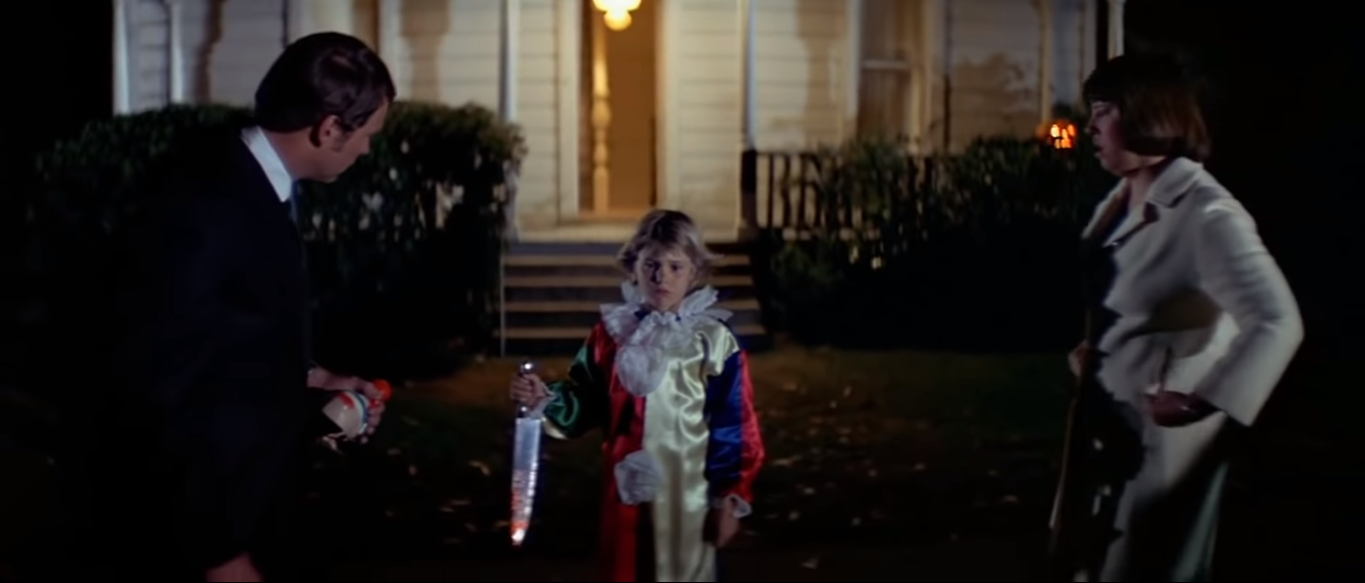Halloween (1978)

Halloween (1978)
Introduction
John Carpenter’s Halloween (1978) is a landmark in horror cinema, often credited with popularizing the slasher genre. Starring Jamie Lee Curtis in her breakout role as Laurie Strode and Donald Pleasence as Dr. Sam Loomis, the film follows the terrifying story of Michael Myers, a masked killer who escapes from a mental institution and returns to his hometown to unleash horror on Halloween night.
With its eerie score, masterful suspense, and minimalist yet effective storytelling, Halloween remains one of the most influential and enduring horror films of all time. This review explores the film’s plot, themes, cinematography, and its lasting legacy in the horror genre.
Plot Summary
The film begins on Halloween night in 1963 in Haddonfield, Illinois, where six-year-old Michael Myers brutally murders his teenage sister, Judith. Institutionalized for 15 years, Michael escapes from Smith’s Grove Sanitarium on October 30, 1978, and returns to Haddonfield.
Dr. Sam Loomis, who has studied Michael for years, realizes the immense danger he poses and desperately tries to warn the authorities. Meanwhile, high school student Laurie Strode and her friends, Annie and Lynda, prepare for Halloween night, unaware of the terror lurking in the shadows.
As the night unfolds, Michael stalks and kills Annie and Lynda, leaving Laurie to confront him alone. In a tense and terrifying final sequence, Laurie fights for her life, narrowly escaping Michael’s attacks with the help of Dr. Loomis, who shoots Michael multiple times. However, in the film’s chilling final moments, Michael’s body mysteriously disappears, leaving the audience with an unsettling sense of dread.
Themes and Analysis
The Boogeyman and Fear of the Unknown
Michael Myers embodies pure evil—an unstoppable force with no clear motive. His faceless mask and silent nature make him an enigma, turning him into the ultimate boogeyman. The film plays on the fear of the unknown, leaving audiences unsettled by Michael’s lack of humanity.
Final Girl Trope
Laurie Strode is the quintessential “Final Girl,” a horror archetype representing intelligence, resilience, and morality. Unlike her friends, who are preoccupied with partying and relationships, Laurie is responsible and observant, which ultimately helps her survive.
The Power of Minimalism
Halloween thrives on simplicity. Carpenter’s use of long tracking shots, eerie lighting, and a slow-building atmosphere creates suspense without relying on excessive gore. The film proves that psychological terror can be more effective than overt violence.
Performances and Character Analysis
Jamie Lee Curtis as Laurie Strode
Curtis delivers an iconic performance, balancing vulnerability and strength. Her portrayal of Laurie set the standard for horror heroines and solidified her as the “Scream Queen.”
Donald Pleasence as Dr. Loomis
Pleasence brings gravitas to the film as Michael’s obsessive psychiatrist. His monologues about Michael’s evil nature add depth and tension to the story.
Nick Castle as Michael Myers
Castle’s portrayal of Michael, known as “The Shape,” is chilling in its stillness and calculated movements. His lack of emotion makes him one of horror’s most terrifying villains.
Cinematography and Score
Carpenter’s direction, combined with Dean Cundey’s cinematography, creates an atmosphere of dread. The use of shadows, first-person POV shots, and the iconic steadicam tracking shot in the opening sequence immerse the audience in the terror.
The film’s haunting score, composed by Carpenter himself, is one of the most recognizable in horror history. The repetitive, minimalist piano theme builds suspense and perfectly complements the film’s eerie tone.
Impact and Legacy
Halloween paved the way for the slasher genre, influencing films like Friday the 13th (1980) and A Nightmare on Elm Street (1984). It launched multiple sequels, reboots, and an entire franchise that continues to this day.
The film’s success demonstrated that independent horror movies could be both critically acclaimed and commercially successful, inspiring future filmmakers to embrace low-budget storytelling with high creative impact.
Conclusion
Halloween (1978) remains a horror masterpiece, proving that suspense, atmosphere, and a terrifying villain can create lasting fear. With its simple yet effective premise, unforgettable score, and legendary performances, it continues to haunt audiences and shape the horror genre more than four decades after its release. Whether you’re a longtime horror fan or a newcomer, Halloween is an essential watch that defines the spirit of the genre.











